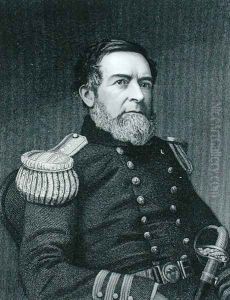Ryder, James F. Paintings
James Fitzallen Ryder was a prominent American photographer and an influential figure in the development of photography in the 19th century. Born in 1826, Ryder began his career in photography in the early 1840s, a time when the photographic process was still in its infancy and undergoing rapid evolution. Ryder was not only a witness to the significant changes in the field but also contributed to its growth through his innovative techniques and artistic approach.
Ryder's journey into photography started in his hometown of Ithaca, New York, where he first became fascinated with the daguerreotype process, the earliest form of photography that created images on silver-plated copper. He moved to Cleveland, Ohio, where he established his studio, becoming one of the city's leading photographers. Throughout his career, Ryder was known for his exceptional skills in portrait photography, capturing the likenesses of many notable figures of his time, as well as for his landscapes and urban scenes which provided a valuable visual record of 19th-century American life.
Beyond his work behind the camera, Ryder was instrumental in advancing the photographic community. He was a founding member of several photographic societies, and his studio became a hub for innovation and discussion among photographers. Ryder was also involved in the development of new photographic processes and techniques, experimenting with various methods to improve the quality and durability of photographic images.
Despite his contributions and the acclaim he received during his lifetime, Ryder's name is not as widely recognized today as some of his contemporaries. However, his work remains an important part of the history of American photography, reflecting the evolution of the medium and the artistic possibilities it offered to those who practiced it. James F. Ryder passed away in 1904, leaving behind a legacy that continues to be studied and appreciated by historians and photographers alike.
